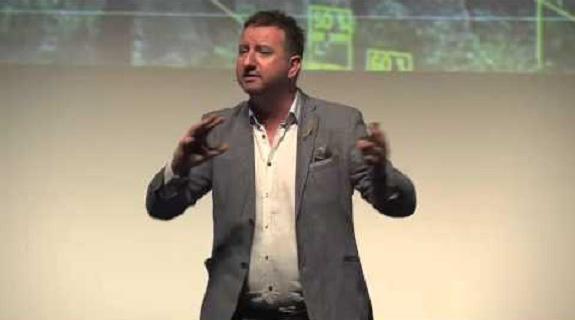Television is changing at a pace that almost no one can keep up with, but that change also represents an incredible opportunity for broadcasters, said Dean Donaldson, digital transformation consultant, at Thursday’s opening keynote at PromaxBDA Station Summit in Las Vegas.
“What is this word television? Watching video content on whatever device, in my mind, is watching TV,” said Donaldson, who then went on to give some eye-popping numbers on all the ways consumption of online video is exploding.
“Globally, there are 5 billion internet users, compared to 1.7 billion TV households. All of these 5 billion households will be able to watch video, 82% of internet traffic will be video and 70% of mobile traffic will be video,” Donaldson said. “Every month, 5 million years worth of video will be transmitted online.”
Five million years worth of video every month!
Looking ahead, Donaldson pointed to several new technologies that he expects to be up and running by 2020 – things such as LiFi, which will transmit data at the speed of light, 100 times faster than data are transmitted today; broadband speeds of 1 terabyte per second (Tbps), which will allow us to download a file that’s 100 times larger than a high-definition feature film in about three seconds; and 8K, which is expected to be in full use by the time Tokyo hosts the summer Olympics in 2020.
“All of this technology and infrastructure is being prepared right now for video,” said Donaldson.
And there’s so much more: TVs that look like panes of glass, hosting 3D content; wafer-thin speakers that are incorporated into screens; haptic 3D, which allows viewers to interact with content using touch and other senses; and TV that’s controlled by eye tracking and brain-sensor interfaces that’s practically “an early form of telepathy,” said Donaldson.
“It’s not about whatever whenever wherever, it’s about technology finally catching up with me as a human being,” he said. “And a big part of that will impact the way we see advertising.”
It’s not just the technology that’s changing, it’s the culture, led by social media.
“Social is the other factor that’s driving this technology for change right now because of the cultural impact,” said Donaldson. “Facebook is a huge proponent of and part of this change. I think Facebook is the biggest threat to the TV industry. Facebook has a large reach to a global population and now they’ve started to put on video. Everywhere there’s a device or a screen it will have a connection and everywhere there’s a connection there will be video and everywhere there’s video, there will be Facebook. By 2020, we’ll see Facebook become the premier video destination over YouTube.”
That definitely sounds threatening, but Donaldson said there’s a role for traditional television in this radically new environment: “Television is the mature big brother. We can embrace all of these amazing new technologies but sometimes the reality of what needs to happen is coming from the wisdom of you guys sitting in the room.”
Another area that is growing rapidly is eSports, which boasts nearly 2 billion global gamers and 260 million eSports viewers.
“The League of Legends championship series saw 334 million viewers tune in over a four-week period, and 36 million viewers tuned in to finals. That’s one-third the size of the Super Bowl at 112 million viewers. That 36 million is more than the viewing figures for the series finales of The Sopranos, Breaking Bad and 24 combined.”
Audiences migrating to different platforms or spending time on lots of different platforms that aren’t TV doesn’t necessarily have to be threatening, said Donaldson, it just requires traditional TV marketers to change their mindsets.
“When you look at the holistic picture, it becomes super exciting,” Donaldson said. “It doesn’t matter what technology you are using. What I’m more interested in are the creative opportunities that it presents. We work in creative storytelling, so let’s create a story.”
Tags:













































__twocolumncontent.jpg)











